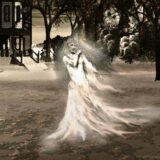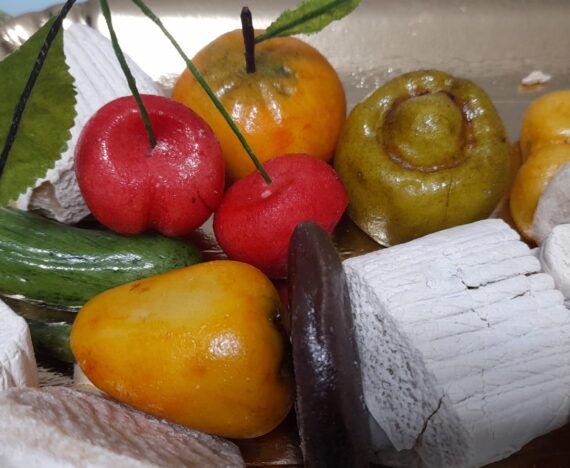This article is also available in: Italiano
Every year in October we find many articles, posts, reels and videos related to Halloween and with them, sometimes, even the controversies about this celebration.
Although it is extremely celebrated in the United States, its origins are Celtic. We have to go back about 3 thousand years and talk about the Samhain Festival, the Celtic New Year’s Eve that marked the passage to winter and during which the barriers between the world of the living and the dead fell.
I have always been curious about this festival, as well as many others, as it is part of the culture and folklore of some places in the world and has evolved differently everywhere.
In fact, although in a different way, practically in everywhere we celebrate, or rather, we commemorate the dead.
It’s not Halloween without stories of witches and ghosts
These days the focus is on the stories of witches and ghosts that have frightened, and sometimes continue to do so, generations and generations of people.
No country is immune, somehow, every palce has stories to tell according to its own tradition. The Netherlands too.
Often the folklore of the Netherlands is linked to that of Belgium and has similarities with that of Germany.
Today I want to tell you 3 stories in the Halloween climate of this country:
Bokkenrijders
“The buckriders”.
We are between 1700 and 1800 and following the legend, there were knights flying in the sky riding goats, looking for souls to give to satan. The flying animals were given to these knights by demons and, it is said, in flight they pronounced the following phrase “Across the houses, across the gardens, across the poles, even across Cologne, up to the wine cellars”.

The name Bokkenrijders was first used in 1774, during the ‘Wellen trial’, (a town in Limburg).
The accused was Johan van Muysen, who had arranged for a farmer, Wouter, to find a letter of threats: van Muysen would have burned his house if Wouter had not given him money.
During the trial Van Muyses claimed to be a member of the knights and referred to Satan several times.
This is because the legend was used by some criminals in the area to steal and take money from farmers. The victims were mostly Catholics and therefore terrified of being targeted by the devil.
Witte Wieven
The translation here is a bit complicated, witte in Dutch means “white” when used as an adjective, but probably the real meaning comes from the English “wise or witty”.
Wieven is the ancient or popular word for “women”.
 The “wise women” were, therefore, originally herbalists and healers who dealt with those who had physical and mental problems. They also had the gift of prophecy.
The “wise women” were, therefore, originally herbalists and healers who dealt with those who had physical and mental problems. They also had the gift of prophecy.
For all these reasons the community praised them and at their death there were many ceremonies at their burial sites to honor them.
According to mythology, their spirits remained on earth and became living spirits (or elves) who helped or hindered the people they met.
It was thought that they lived near the areas of their burial and, for this reason, that the fog on a cemetery was the spirit of the wise woman who appeared, and people brought offerings to them and asked for help.
Moord op de Zeedijk
Also known as “The ghost of Zeedijk” , this one is a sad story of love, envy and death.
Dina, the daughter of a leather tanner from Zeedijk, was dating a sailor, the two were in love and wanted to get married. But unfortunately Dina’s sister, Helena, was in love with the sailor as weel, and her envy led her to the point of killing her sister.

Helena made Dina’s death look like an accident, when instead she pushed her down the basement stairs and closed the door leaving her to die there alone.
Helena married the sailor, but spent all her life wracked with guild. On her deathbed she confessed to her husband what she had done.
The disgusted sailor turned his back and let her die alone.
That same night, the inhabitants of Zeedijk were awakened by chilling laments and furious howls.
It seems that even today you can meet the ghost of Helena, you realize its proximity if, passing by Zeedilijk (neighborhood in Amsterdam), you feel a shiver along the back.
These are just a few of the many stories of the Netherlands.
I now go to find more to tell you next time.
See you soon
Rossella






